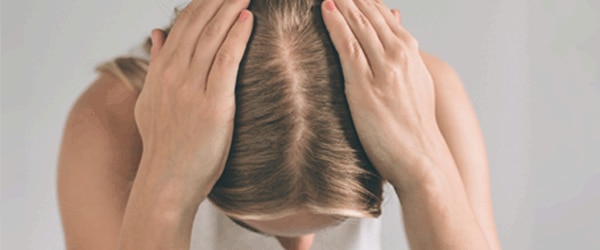Chronic telogen effluvium: information about the physiological mechanism at play
Hair loss in chronic telogen effluvium is less significant than in acute telogen effluvium (occasional hair loss). The latter generally manifests sporadically over the course of several years in middle-aged women who had thick, shiny hair originally. They complain of reduced length and volume.
Chronic androgenetic alopecia: the other form of chronic hair loss
* Source: Blume-Peytavi et al., 2011; Norwood, 1975

